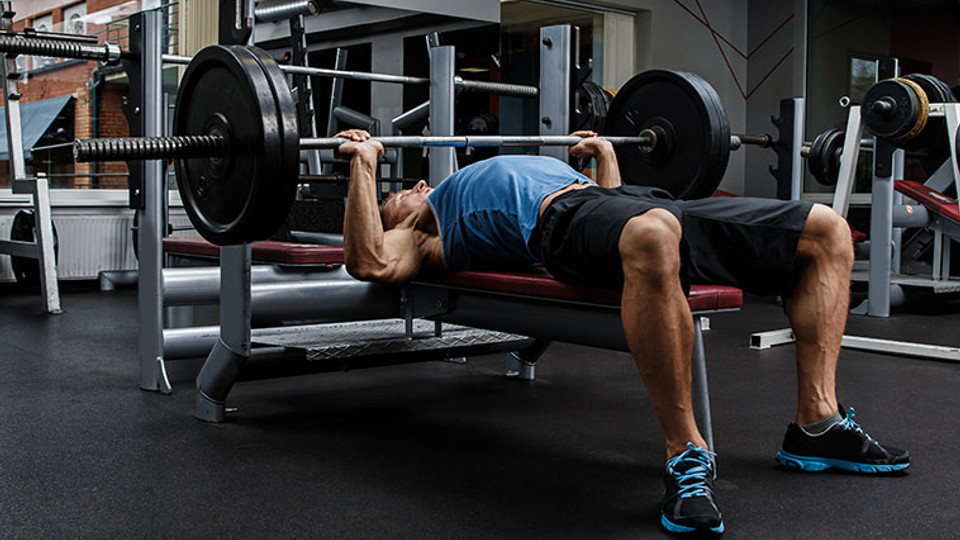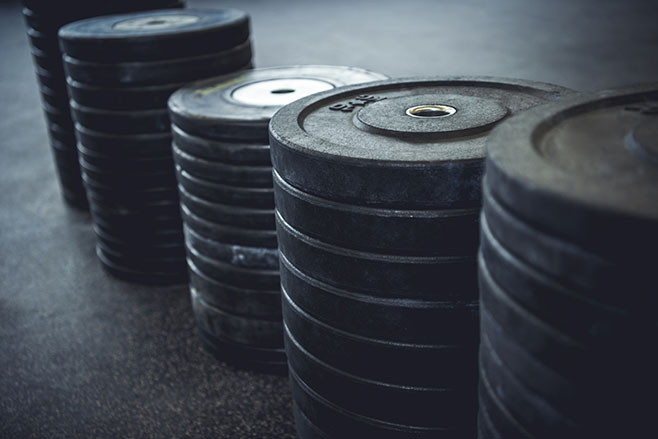
There are a couple in every gym and we’ve all seen them: that one person who comes in regularly, week in, week out, but never makes any progress. They could do a session every single day, spending hours in there, but still nothing changes.
Perhaps you have found yourself in a similar situation, spinning your wheels as nothing changes. Most people have at some point, to a greater or lesser degree.

This is because so many people ignore the founding principle of any athletic training: progressive overload. This is because they stick to the same exercises, the same rep ranges for the same sets, at the same exact weight.
Muscles grow in response to training stimuli. Your cardiovascular and respiratory systems improve capacity and function in response to training stimuli. Your muscles and soft tissue joints relax and open in response to flexibility training. Your reflexes and the cognitive aspects of training improve in response to new, enlivened training patterns. To keep these systems growing and improving constantly, you need to make use of progressive overload: you need to make progressively greater demands of them so that they never plateau.
Your body has no incentive to change, otherwise. It will have no incentive to become stronger, faster and more efficient.

Progressive overload in brief
Let’s take strength training as our example, as this is where progressive overload really comes into its own. Most people embarking on a strength training program are looking to increase or maintain their muscle mass and total strength. So far, so obvious.
However, in order to achieve greater strength and build more muscle, muscles need to be placed under ever increasing loads, worked and stretched in such a way as to trigger the body’s natural adaptive response: new demands create new capabilities.

This means the demands have to be new. I’ll go into this in more detail below, showing you several different ways to change up your programming or routines to find these new demands.
The benefits of progressive overload
Progressive overload doesn’t just target the obvious physiological processes, however. Though your aim may be increased muscular strength and/or improved cardiovascular function, there are other benefits to be found in incrementally raising the amount of stress through which you’re putting your body. The development of stronger, denser bones is stimulated (so much so that tennis players often have up to twice the bone density in their serving arm as in their off hand.) Ligaments, tendons and cartilage are all strengthened, and blood flow to these crucial regions is increased. Neuro connectivity is improved, meaning that more responsive nerve connections between your recruited muscles and your brain are stimulated.
But these can all only be improved upon by regularly upping the ante: progressive overload means adding pressure in one form or another, on a regular, consistent basis.
If you don’t, these processes are reversed. Muscular atrophy can occur if you drop the amount of stimulation involved. This can result in the annual loss of around a pound of muscle for sedentary individuals. This is the main cause of lack of strength and lowered basal metabolic rate (BMR) in the elderly: with less metabolically intense muscle tissue, your body will turn more and more calories into fat.

The reality of progressive overload
So, what does progressive overload look like? And, conversely, what does its lack look like?
If you can squat 100kg comfortably for a set of 8, this is good. If you continue to squat that 100kg for 8, week after week, taking the same rest period between sets, you will be in a plateau, which is not where you want to be. You will neither adapt nor improve.
Instead, when that 100kg is comfortable, try adding 5kg. Soon enough, this will feel comfortable. Then add another 5kg. This too will become comfortable in time, so that before you know it you can squat 110kg for 8 reps.
This is progressive overload.

Alternatively, if you can squat that 100kg for a comfortable set of 8, try reaching for a set of 9 in your next squat session. Get yourself to the point at which this is comfortable. Then, go for 10. Now, when this is comfortable, you can squat 100kg for 10 instead of 8.
This, too, is progressive overload. I’ll go into different techniques like these to elicit progressive overload below.
However, as with most things, there are some pros and cons to progressive overload. We will need to mention these before we go any further and bear them in mind going on.
Its strengths:
- Linearity: instead of going for rotating percentages or any other overly involved programming (which we won’t go into here), progressive overload is straightforward. You make consistent, measurable, forward progress.
- Simple: progressive overload is also simple. You know what you did last week? Do a little more this week. It can be this simple, and this simplicity has a lot to recommend itself.
- When it works, progress is consistent: adding a couple of reps or a couple of kilograms to an exercise every week or two means that you know where your next gains are coming from. You can trace your gains easily overtime, and even if it takes a little while, this kind of consistent progress means you know that you can achieve your goals.
- Very inspiring: any training can be a bit of a hard slog. When you’re seeing no returns for your effort, you can be put off. However, when you can see the barbell getting heavier, the reps packing in more, the miles getting easier, you will feel inspired to carry on.

Its weaknesses:
- It isn’t always that simple- plateaus occur: you will hit a wall at some point. You cannot simply keep adding 5kg to the bar every week and expect it to last: at some point you will need to change something up to elicit new growth.
- You may not be working enough angles: simply adding a plate or so every few weeks is quite 2-dimensional. There are a whole plethora of physiological quirks and mechanisms that you can manipulate in training, and progressive overload can skip these quite drastically.
How to get around these weaknesses
There are however ways to make progressive overload work for you, despite the above weaknesses. You just have to be a bit clever and make sure that your program allows for all of the following.
Resistance increase
The is the simple, bread and butter heart of progressive overload. Any program you follow should have an element of resistance increase. This is where you put more weight on the bar over time, or otherwise make the resistance against which you’re working greater, consistently and regularly.
Rep increase
As mentioned above, you can elicit progressive overload by manipulating reps. Rather than piling on extra weight, simply do more repetitions in each set as you get stronger. For hypertrophy, you generally want to be within 8-14 reps, whilst for strength lower amounts are appropriate. Therefore, when building muscle, train to be able to get 14 reps out of what you can currently lift for 10. For strength, get 4 reps out of that 2 rep number.
Rest less
If you can do 3 sets of 12 squats at 80kg with a two-minute rest, that’s great. Doing 3 sets of 12 squats at 80kg with a 90 second rest is better (and harder, of course). Doing 3 sets of 12 squats at 80kg followed by five burpies, with a 90 second rest afterwards, goes even further still. Train towards a goal like this and you will hit progressive overload.

Increase volume and/or training frequency
What you can do a little of now, train to be able to do a lot of in the future: at its base, it’s that simple. For volume, add more reps or sets so that you’re putting your body under a greater amount of total tension. For frequency, add an extra day into the schedule: to build your squat, try squatting 3 times per week instead of twice.
Both ways will put more total strain on your body, eliciting that training effect we’re after.
Any of these will be hard at first, and your technique may suffer, but your body will adapt: progressive overload is precisely this adaptation. Any of the four methods listed above will work for you: they are each common techniques for hitting progressive overload.
However, you don’t want to do them all at once, nor do you want to do any indefinitely. If you’re happy with your total strength, but you know the way to improve is to increase your work capacity, then increasing volume will be the way forwards. Once this adaptation has plateaued after a few months, you many feel that you’ve been lifting too much in one rep range, and so switch it up. Move from sets of 10 to sets of 4, or from sets of 6 to sets of 12.

Then, when you can handle the right amount of sets and reps in each session, but perhaps you think your deadlift is falling behind the rest of your lifts, there’s a clear course of action. Deadlift twice per week instead of once.
Manipulating these variables is key to your lifting success. Over time, you’ll get a handle on which ones work for you, when, and in what order. For the moment, just pick one of the above that you know is lacking in your current routine. Switch it up, make some improvements: overload progressively.
Rinse and repeat. It’s that simple.




